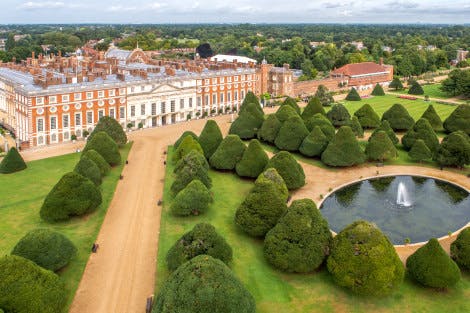Changing Fashions, Changing Positions
Tijou’s work revolutionised metal working in England during his lifetime, and he created new ironwork for some of the most important buildings in the country. Following his death, few English blacksmiths possessed the skill to replicate his work, and the fashions of the time were also quickly changing to favour simpler classical designs.
Most of the decoration on the screen is repoussé work, a specialist metalworking technique where the material is shaped by being hammered from behind with a variety of metal tools to add depth and detail to the design. This technique was common in France in the 17th century, but was largely overlooked by English ironworkers. It is a time-consuming and difficult skill to master, which makes Tijou’s work all the more impressive, and also difficult to repair and conserve.
Considering its size, the Tijou Screen has had quite an eventful life. At Hampton Court it has been moved around the estate at least three times as different royals sought to show it off in new positions. In 1860 the screen was reported to be in a terrible state of repair and was taken from Hampton Court to the Victoria and Albert Museum.
The screen’s adventures didn’t stop there: between 1870-1900 the individual panels were sent to different museums and art galleries. This period saw the screen on display in Wolverhampton, Sheffield, Nottingham, Dublin and Edinburgh. The screen finally returned to Hampton Court in 1901 when it was re-erected where William III wanted it, in its current position at the end of the Privy Garden.
The screen is not only exposed to the elements, its position against a public footpath means it has also been a target for thieves and vandals. In March 1998 the thistle emblem from the centre of panel seven was removed and assumed to have been stolen. Following investigations it was decided to send divers into the river next to the screen where, happily, not only was the thistle found but several other parts of the screen which had been removed and disposed of over the years!










